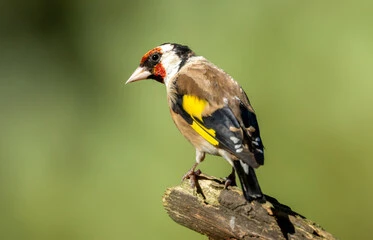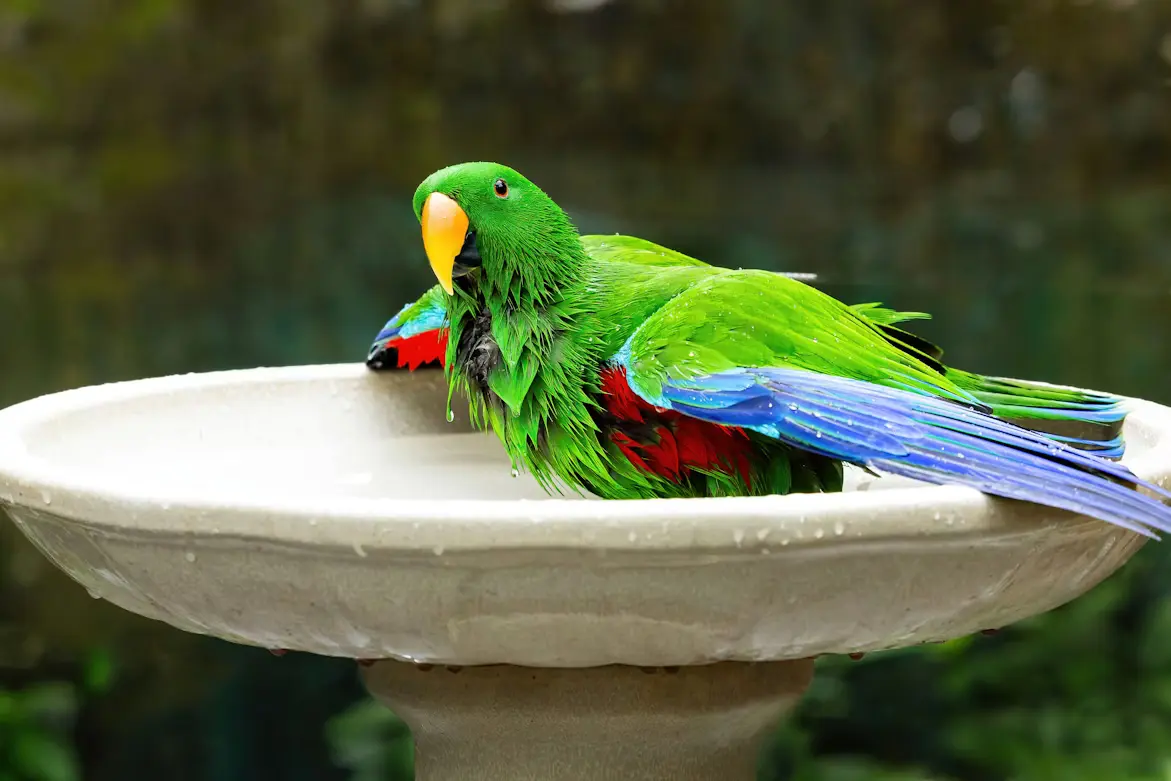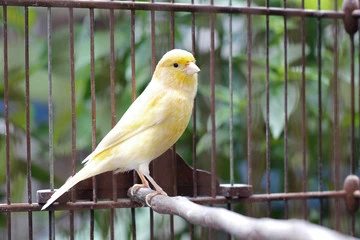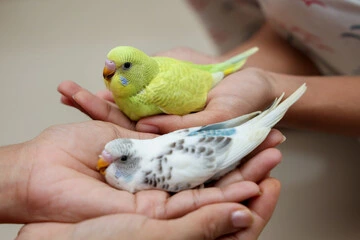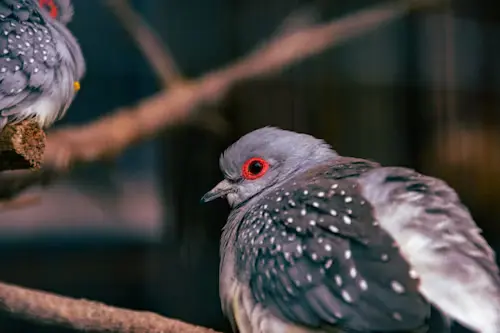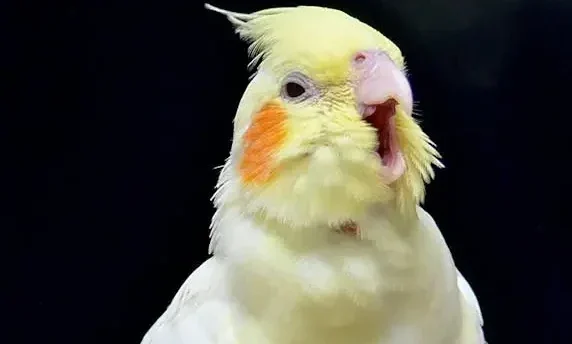Massive Parrot Cages: How to Find the Perfect Fit

Table of Contents
Introduction: Size Matters for Parrot Well-Being
When it comes to providing the best home for your feathered companion, few decisions are as important as selecting the right cage. For parrots—intelligent, active, and social creatures—a massive parrot cage isn’t just a luxury; it’s essential for their physical and emotional health. Unlike smaller birds, parrots need substantial space to stretch their wings, play, and thrive.
Parrots in the wild fly miles each day, exercise constantly, and engage with a complex environment. A cramped cage can lead to serious health and behavioral issues, including feather plucking, screaming, and depression. Investing in an extra large parrot cage isn’t just about aesthetics—it’s about creating an environment where your parrot can truly flourish.
“The size of a parrot’s cage directly impacts their quality of life. A massive parrot cage isn’t an indulgence; it’s a necessity for their overall well-being.” – Dr. Avian Wilson, Avian Veterinarian
In this comprehensive guide, we’ll explore everything you need to know about massive parrot cages: their benefits, what to consider before purchasing, top options on the market, and how to maintain them for years of use.
Benefits of a Massive Parrot Cage: Why Bigger Is Better

Physical Health Benefits
A giant parrot cage provides crucial space for exercise, which helps prevent obesity and related health problems. According to avian experts, proper exercise helps maintain:
- Cardiovascular health
- Muscle tone and strength
- Proper bone density
- Healthy respiratory function
- Better weight management
Larger cages allow parrots to fully extend their wings—a basic need often overlooked in smaller enclosures. This natural movement helps prevent joint stiffness and muscle atrophy.
Mental Well-Being
Parrots are among the most intelligent bird species, with cognitive abilities similar to a 3-5 year old child. An oversized parrot cage helps prevent psychological issues by providing:
- Room for enrichment activities
- Space for multiple toys and perches
- Areas for different activities (eating, playing, resting)
- A greater sense of security
- Reduced stress and anxiety
Flight Space: A Critical Need
While most pet parrots won’t have the same flight opportunities as their wild counterparts, a massive parrot cage can provide limited flight space—crucial for species like Macaws, African Greys, and Amazons.
Even short flights from one end of a large parrot cage to another provide:
- Exercise for chest and wing muscles
- Mental stimulation
- Natural behavior outlets
- Better respiratory health
Enrichment Opportunities
With a giant parrot cage, you can create different zones for various activities:
| Zone Type | Purpose | Recommended Items |
|---|---|---|
| Foraging Zone | Encourages natural food-finding behaviors | Foraging toys, puzzle feeders |
| Play Zone | Provides mental stimulation | Swings, ladders, chewable toys |
| Rest Zone | Offers quiet space for relaxation | Comfortable perches, partial coverage |
| Bathing Zone | Allows for hygiene maintenance | Bird bath, misters |
Considerations Before Buying a Massive Parrot Cage

Matching Cage Size to Parrot Species
Different parrot species have different space requirements:
- Large Macaws (Scarlet, Blue and Gold, Green-winged): Require the largest cages, preferably parrot aviaries or walk-in enclosures
- Medium-Large Parrots (African Greys, Amazons, Cockatoos): Need extra large parrot cages with ample height and width
- Medium Parrots (Conures, Caiques, Senegals): Benefit from large parrot cages with appropriate bar spacing
- Small-Medium Parrots (Quakers, Lovebirds): Can thrive in appropriately sized cages with correct bar width
Space Available in Your Home
Before investing in an oversized parrot cage, measure your available space carefully. Consider:
- Ceiling height (many massive parrot cages are 5-7 feet tall)
- Floor space (including area for cage door swing)
- Room for cleaning access around all sides
- Distance from windows, heaters, and air conditioners
Budget Considerations
Massive parrot cages represent a significant investment, with prices ranging from $300 to $3,000+ depending on size, materials, and features. When budgeting, remember to factor in:
- Initial cage cost
- Shipping (often substantial for large items)
- Assembly time or professional assembly fees
- Accessories (perches, toys, food dishes)
- Replacement parts and maintenance
Material Safety and Durability
For long-term satisfaction, prioritize:
- Stainless Steel: Most durable and safest, though expensive
- Powder-Coated Steel: Good balance of durability and cost
- Wrought Iron: Attractive but heavier and potentially containing zinc
- Avoid: Cheap metals, painted surfaces that can chip, and any materials containing zinc or lead
Bar Spacing and Security
Appropriate bar spacing is crucial for safety:
- Large Macaws: 1-1.5 inch spacing
- Medium Parrots: 3/4-1 inch spacing
- Smaller Parrots: 1/2-3/4 inch spacing
A secure locking mechanism is non-negotiable—parrots are escape artists with powerful beaks that can manipulate simple latches.
Types of Massive Parrot Cages

Free-Standing Cage Styles
- Play-top Cages: Feature an external play area on top, ideal for out-of-cage time
- Dome-top Cages: Provide extra vertical space with an elegant curved ceiling
- Double-door Cages: Offer easy access for cleaning and interaction
- Modular Systems: Allow for expansion and customization
Parrot Aviaries
For the ultimate in parrot housing, aviaries provide indoor/outdoor options:
- Indoor Aviaries: Room-sized enclosures that allow for limited flight
- Outdoor Aviaries: Weather-protected spaces for seasonal use
- Hybrid Systems: Combination indoor/outdoor setups with protected access
Material Options
Each material offers distinct advantages:
- Stainless Steel
- Virtually indestructible
- Non-toxic and chew-resistant
- Easiest to clean and sterilize
- Rust-proof for lifetime use
- Wrought Iron
- Classic, elegant appearance
- Very sturdy and heavyweight
- Good for larger parrots
- Requires checking for safe coating
- Powder-Coated Steel
- More affordable option
- Available in various colors
- Needs monitoring for chipping
- Generally durable with proper care
Essential Features to Look For
The best massive parrot cages include:
- Play-tops: External play areas that expand usable space
- Seed Guards: Minimize mess from food and feathers
- Pull-out Trays: Make cleaning faster and more efficient
- Multiple Access Doors: For spot cleaning and interaction
- Wheels/Casters: Allow for repositioning (with locks for security)
- Multiple Feeder Stations: Encourage movement around the cage
Top Massive Parrot Cage Brands & Models
Premium Options
King’s Cages
- Superior 6834: Massive 68″ x 34″ footprint with 1″ bar spacing
- Pros: Aircraft-grade aluminum, extremely durable, excellent customer service
- Cons: Premium price point ($2,000+), heavy to move
- Best for: Large macaws and cockatoos
Avian Adventures
- Grande Dometop: 42″ x 30″ with generous height and integrated playtop
- Pros: Elegant design, excellent build quality, easy-roll casters
- Cons: Assembly can be challenging
- Best for: African Greys, Amazons, and medium-large parrots
Mid-Range Quality Options
Prevue Hendryx
- Signature Series: Extra large parrot cage with substantial dimensions
- Pros: Good value, durable construction, reliable brand
- Cons: Not as heavy-duty as premium options
- Best for: Most medium to large parrots
HQ Cages
- Giant Victorian Top: Oversized parrot cage with decorative elements
- Pros: Attractive design, good size-to-price ratio
- Cons: Some plastic components may need replacement
- Best for: Amazons, African Greys, smaller cockatoos
Budget-Friendly Giants
Yaheetech
- Extra Large Rolling: 69″ height with rolling stand
- Pros: Affordable, good size, mobile design
- Cons: Less durable hardware, may need reinforcement
- Best for: Budget-conscious owners of medium parrots
Nova Microdermabrasion
- Large Bird Cage with Play Top: 68″ height with play area
- Pros: Good value, includes toys and perches
- Cons: Assembly instructions could be better
- Best for: First-time large parrot owners
Safety Features to Look For
Non-toxic Materials
Parrot safety begins with materials that can withstand chewing without releasing toxins:
- Choose food-grade stainless steel when possible
- Verify powder coating is non-toxic and baked-on
- Avoid galvanized metals (contain zinc) and cheap imports with unknown materials
- Request lead and heavy metal testing information from manufacturers
Secure Latch Systems
Parrots are natural problem-solvers and can manipulate simple locks:
- Look for dual-action latches requiring two motions to open
- Bolt-style locks are preferable to simple sliding mechanisms
- Some premium cages offer keyed locks for maximum security
- Avoid guillotine-style doors that could trap curious toes or beaks
Appropriate Bar Design
Beyond spacing, consider:
- Bar Thickness: Should withstand chewing from your specific species
- Bar Direction: Horizontal bars facilitate climbing
- Connection Points: Should be welded, not crimped or easily separated
- Edge Finishing: No sharp edges or burrs that could cause injury
Setting Up Your Massive Parrot Cage
Strategic Placement
Position your giant parrot cage for optimal bird comfort:
- Against a wall (not in corners) for security
- Away from direct sunlight, drafts, and kitchen fumes
- In a family area where the bird feels included
- With enough surrounding space for cleaning access
- At eye level or below for larger birds to feel secure
Perch Selection and Placement
Diverse perches are essential for foot health:
- Natural Wood: Manzanita, dragonwood, or java wood in varying diameters
- Rope Perches: Provide comfort but need regular cleaning/replacement
- Platform Perches: Offer resting spots for foot relaxation
- Placement: Different heights and distances to encourage movement
Enrichment Through Toys
A massive parrot cage allows for extensive toy rotation:
- Foraging Toys: Hide treats to encourage natural behaviors
- Destructible Items: Palm leaves, seagrass, and natural fibers for chewing
- Puzzles: Mental stimulation is crucial for intelligent parrots
- Swings and Climbers: Promote physical activity
- Noise Makers: Bells and clickers for auditory engagement (use sparingly)
Food and Water Setup
Create a healthy dining area:
- Position food away from perches to prevent contamination
- Use stainless steel bowls for easy cleaning
- Provide multiple water sources throughout the cage
- Consider specialized feeders for particular foods (nectar, soft foods)
Maintaining Your Massive Parrot Cage
Daily Cleaning Routine
- Spot clean droppings and food debris
- Replace paper or substrate on cage bottom
- Wash and refill water containers
- Remove perishable foods promptly
Weekly Deep Cleaning
For hygienic conditions:
- Move bird to temporary holding cage
- Remove and clean all accessories
- Vacuum or wipe down cage surfaces
- Sanitize with bird-safe disinfectant (diluted vinegar or specialized products)
- Allow to dry completely before replacing perches and toys
Toy Rotation Strategy
Keep your parrot engaged by:
- Rotating toys weekly to maintain interest
- Introducing new toys gradually (some parrots fear new objects)
- Keeping a “toy box” with cleaned items ready for rotation
- Monitoring for wear and tear, especially on destructible toys
Addressing Common Concerns
Cost Justification
While massive parrot cages represent a significant investment:
- Quality cages last decades, often outliving several smaller, cheaper options
- Veterinary bills from stress-related conditions often exceed the cost difference
- Consider it an investment in your bird’s health and well-being
- Look for used premium cages from reputable sources for savings
Space Requirements
For those with space concerns:
- Consider room reorganization to accommodate appropriate housing
- Some models feature space-saving designs with vertical emphasis
- Remember that out-of-cage time can supplement, but not replace, proper cage size
- Prioritize width over height if space is truly limited
Noise Management
Large cages can create more noise when birds play:
- Place rubber or felt pads under cage wheels
- Position away from walls that amplify sound
- Use sound-absorbing panels in the bird’s room
- Consider carpet underneath rather than hardwood or tile
FAQs About Massive Parrot Cages
Q: How big should a massive parrot cage really be for my Macaw? A: For large macaws, the minimum recommended cage size is 36″W x 24″D x 48″H, but larger is always better. Ideally, the width should be at least twice your bird’s wingspan.
Q: Can my parrot get too much space in an oversized cage? A: No, parrots don’t get “lost” or stressed in larger spaces as long as the environment is appropriately set up with familiar items and secure perches.
Q: How do I move such a large cage when needed? A: Look for models with heavy-duty casters/wheels with locking mechanisms. For moving between homes, many large cages can be partially disassembled.
Q: Are parrot aviaries better than traditional massive cages? A: Aviaries provide the most space but require more room in your home. They’re ideal if you have multiple birds or a dedicated bird room.
Q: How often should I replace a massive parrot cage? A: A quality massive parrot cage can last 20+ years with proper maintenance. Replace only if there’s structural damage that compromises safety.
Conclusion: Investing in Your Parrot’s Future
Choosing the right massive parrot cage is one of the most important decisions you’ll make as a bird owner. While the initial investment may seem substantial, the benefits to your parrot’s physical health, mental well-being, and overall quality of life are immeasurable.
Remember that parrots are long-lived companions—many species live 30-70 years—making their housing a long-term investment. By providing a spacious, enriching environment in an appropriately sized cage, you’re setting the foundation for a happy, healthy bird who will reward you with affection and companionship for decades to come.
Whether you choose a large parrot cage with a play top, an extra large parrot cage with all the bells and whistles, or commit to a full parrot aviary, your feathered friend will benefit from your thoughtful consideration of their needs.
Ready to upgrade your parrot’s living space? Start by measuring your available area, researching the specific needs of your parrot species, and comparing the features of different massive parrot cages to find the perfect match for both you and your beloved bird.
Have you recently upgraded to a massive parrot cage? Share your experience in the comments below!

